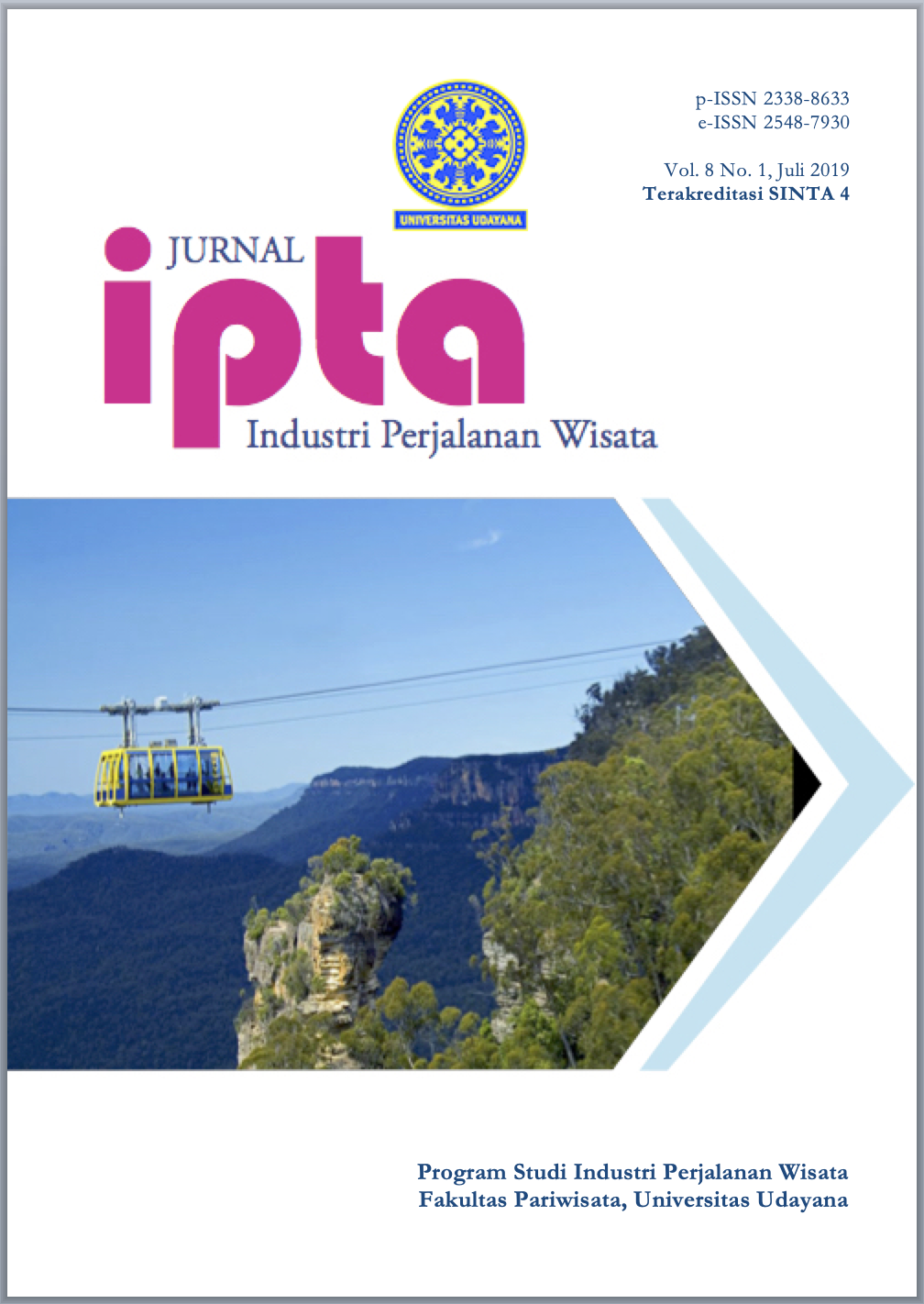PENGARUH PROMOSI FACEBOOK, TWITTER, DAN INSTAGRAM TERHADAP KEPUTUSAN WISATAWAN KE PANTAI PANDAWA BALI
Abstract
This research intended to find out: (1) How is the influence of promotion on social media facebook, twitter and instagram on the image of the Pandawa beach?, (2) How does the promotion on social media Facebook, Twitter and Instagram influence the decision to visit tourists to the Pandawa beach? (3) What is the effect of the image of the Pandawa beach in touristic decisions?, The results showed (1) Social Media Promotion variable (X) has a direct influence on the Image (Y1) because it has a probability value (0,554) ? 0.05 which means there is a significant positive effect, (2) Social Media Promotion variable ( X) has a positive influence on Visiting Decision (Y2) because it has a probability value (0,207) ? 0.05 which means there is a significant positive effect. (3) Image variable (Y1) has a positive influence on Visiting Decision (Y2) because it has probability value (0,516) ? 0.05 which means there is a significant positive effect. Based on the conclusions stated above, several suggestions were given and were expected to provide benefits to the aid providers of the management of the Bali Pandawa beach. It is expected that the management to always maintain and try to improve the positive image of the Pandawa beach that has been embedded in the minds of the public and it is also hoped that the management will more aggressively promote tourist attractions on the Pandawa beach through social media, because promotion through social media is believed to be the most effective way to introduce beauty and the uniqueness of the Pandawa beach to the wider community.
Downloads
References
Ali, Baseer Durrani., Iqbal, Danish Godil., Uzair , Mirza Baig., Sajid, Sana. 2015. Impact Of Brand Image On Buying Behaviour Among Teenagers. European Scientific Journal February 2015 edition vol.11.
Ferdinand, Augusty. 2014. Metode Penelitian Manajemen. Semarang: Badan Penerbit Universitas Diponegoro.
Ghozali, Imam. 2013. Aplikasi Analisis Multivariate dengan Program IBM SPSS 21 Update PLS Regresi. Semarang : Badan Penerbit Universitas Diponegoro.
Guzel, Gonca Sahin dan Sengün, Gunce. 2015. The Effects of Social Media on Tourism Marketing: A Study among University Students. Management and Administrative Sciences Review Vol. 4.
Jaya, I Gede Nyoman Mindra dan I Made Sumertajaya. 2008. Pemodelan Persamaan Struktural Dengan Partial Least Square. E-Journal On-line.
Margono. 2004. Metodologi Penelitian Pendidikan. Jakarta : Rineka Cipta
Negara, I. Made Kusuma, and Putu Agus Wikanatha Sagita. "KAPABILITAS PRAKTIS DOMAIN PERJALANAN WISATA BALI: APLIKASI PERJALANAN WISATA BERBASIS PONSEL CERDAS". Jurnal IPTA 6.1 (2018): 77-83.
Suardana, I. Wayan. "Analisis kebijakan Pengembangan Pariwisata (Intervensi Melalui Kebijakan Pariwisata Berkelanjutan di Bali)." (2016).
Taprial, Varinder & Priya Kanwar. 2012. Understanding Social Media. London: Ventus Publishing ApS.
Wenats, Eka, dkk. 2012. Integrated Marketing Communications : Success Story. Jakarta : PT.Gramedia Pustaka Utama.
Živković, Radmila., Gajić, Jelena., Brdar, Ivana. 2014. The Impact Of Social Media On Tourism. Singidunum University, Belgrade, Serbia.

This work is licensed under a Creative Commons Attribution-ShareAlike 4.0 International License.





